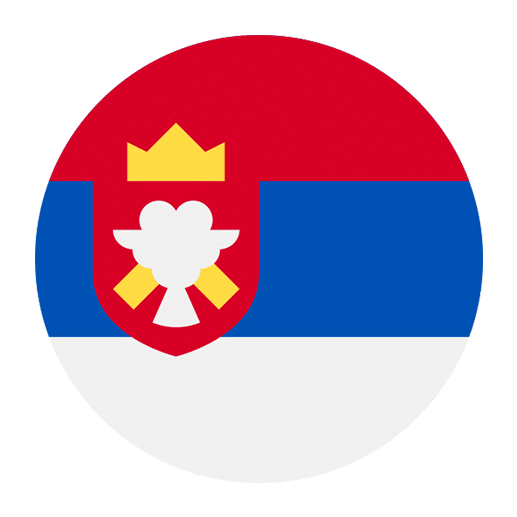The Serbian language, a member of the South Slavic group of languages, boasts a rich and multifaceted history that spans centuries. This journey from ancient roots to the modern era encapsulates the development, influences, and evolution of a language that is central to the identity of the Serbian people. Understanding this history not only provides insights into the language itself but also offers a window into the cultural and historical dynamics of the region.
Ancient Roots and Early Development
The origins of the Serbian language can be traced back to the Proto-Slavic language, which was spoken by the Slavic tribes before their dispersion across Eastern Europe. Proto-Slavic was a branch of the larger Indo-European language family, which also includes languages like English, German, and Sanskrit. The Slavic tribes began migrating and settling in the Balkans around the 6th and 7th centuries, bringing their language with them.
The early form of what would become the Serbian language began to take shape as these Slavic tribes settled in the region. This period saw the diversification of the Proto-Slavic language into various regional dialects, including those that would evolve into Serbian. The influence of neighboring languages and cultures, such as Greek and Latin, also began to leave their mark on the developing language.
The Cyrillic Script and the Medieval Era
One of the most significant milestones in the history of the Serbian language was the adoption of the Cyrillic script. The Cyrillic alphabet was developed in the 9th century by Saints Cyril and Methodius, two Byzantine brothers who sought to create a written system for the Slavic peoples. This new script made it possible to translate religious texts, and it played a crucial role in the Christianization of the Slavic tribes.
The adoption of the Cyrillic script had a profound impact on the Serbian language. It facilitated the standardization and preservation of the language, allowing for the creation of a written literary tradition. The earliest known Serbian manuscripts, such as the Miroslav Gospel from the late 12th century, are written in Cyrillic and provide valuable insights into the language of the time.
The medieval period was a time of significant cultural and linguistic development for the Serbian people. The establishment of the Serbian kingdom under the Nemanjić dynasty in the 12th century brought about a flourishing of literature, law, and religious texts. Serbian medieval literature, such as the epic poetry known as “gusle” and the hagiographies of saints, contributed to the enrichment of the language and its literary tradition.
Ottoman Influence and the Renaissance
The fall of the Serbian Despotate in the 15th century and the subsequent Ottoman conquest had a profound impact on the Serbian language. The Ottoman Empire ruled over the region for several centuries, during which time the Serbian language was influenced by Turkish, Arabic, and Persian. Many Turkish loanwords entered the Serbian vocabulary, particularly in areas such as administration, military, and daily life.
Despite the challenges of Ottoman rule, the Serbian language and culture persisted. The period of Ottoman domination also saw the preservation of Serbian cultural identity through oral traditions, folk songs, and epic poetry. These forms of expression played a crucial role in maintaining the language and passing it down through generations.
The Renaissance period in Europe brought about a revival of interest in classical learning and the arts, and this cultural movement also had an impact on the Serbian language. The 18th and 19th centuries saw a resurgence of Serbian literary activity, with writers and scholars seeking to revive and modernize the language. The influence of Western European languages, particularly German and French, began to shape the Serbian lexicon and literary style.
The Birth of Modern Serbian
The 19th century was a pivotal time in the history of the Serbian language. The efforts of linguists and reformers such as Vuk Karadžić played a crucial role in shaping modern Serbian. Karadžić, a philologist and ethnographer, is often credited with standardizing the Serbian language and reforming its orthography.
Karadžić’s work was based on the principle that the language of literature should be as close as possible to the spoken language of the people. He collected and published folk songs, stories, and proverbs, which helped to document and preserve the rich oral tradition of the Serbian people. Karadžić also introduced a new orthographic system that simplified the writing of Serbian and made it more accessible to the general population.
One of Karadžić’s most significant contributions was the publication of the first Serbian dictionary, “Srpski rječnik,” in 1818. This dictionary not only standardized the spelling and usage of words but also included extensive ethnographic information, providing a comprehensive picture of Serbian language and culture.
20th Century and the Yugoslav Era
The 20th century brought about significant political and social changes that also influenced the Serbian language. The creation of the Kingdom of Serbs, Croats, and Slovenes (later known as Yugoslavia) in 1918 brought together various South Slavic peoples under a single political entity. This period saw efforts to promote a unified South Slavic language, often referred to as Serbo-Croatian.
The idea of a unified language was based on the similarities between the Serbian, Croatian, Bosnian, and Montenegrin dialects. However, the notion of a single Serbo-Croatian language was met with resistance from different linguistic and cultural groups, each of which sought to preserve its own identity and linguistic heritage.
The breakup of Yugoslavia in the 1990s and the subsequent wars led to a renewed emphasis on linguistic and cultural distinctiveness. As a result, the Serbian language once again emerged as a distinct entity, separate from Croatian, Bosnian, and Montenegrin. This period also saw efforts to purify the Serbian language by removing loanwords and influences from other languages.
Modern Serbian Language and Globalization
In the contemporary era, the Serbian language continues to evolve and adapt to the changing world. The advent of globalization and the rise of digital communication have brought about new challenges and opportunities for the language. The influence of English, as the global lingua franca, is particularly notable in areas such as technology, business, and popular culture.
Despite these influences, the Serbian language remains a vital and dynamic part of the cultural identity of the Serbian people. Efforts to preserve and promote the language continue, with initiatives such as language education programs, literary festivals, and the publication of contemporary Serbian literature.
The Serbian language is also recognized as one of the official languages of Serbia, Bosnia and Herzegovina, Montenegro, and Kosovo. This official status ensures that the language is used in government, education, and public life, helping to maintain its relevance and vitality.
Conclusion
The history of the Serbian language is a testament to the resilience and adaptability of a people and their linguistic heritage. From its ancient roots in the Proto-Slavic language to its development through medieval, Ottoman, and modern eras, the Serbian language has evolved and thrived despite numerous challenges and influences.
Understanding this history not only enriches our appreciation of the Serbian language but also provides valuable insights into the cultural and historical dynamics of the Balkans. As the world continues to change, the Serbian language will undoubtedly continue to evolve, reflecting the experiences and aspirations of the Serbian people.

